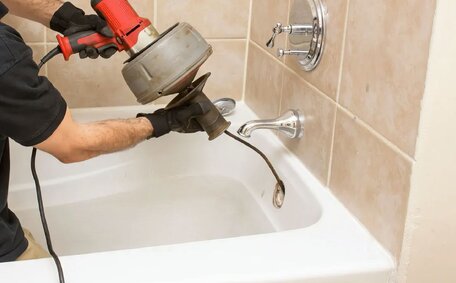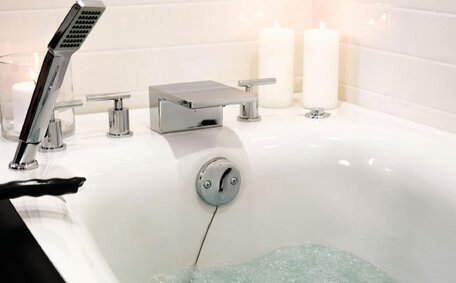Understanding How Tree Roots Damage Pipes
Tree root invasions pose a significant threat to pipes, presenting with distinct indications.
In older properties, porcelain or earthenware plumbing systems frequently harbour fine cracks and loose connections. These provide easy access points for roots your sewer might be compromised by, letting them snake their way inside your plumbing. Tree roots are drawn to the moisture and nutrients in your pipes, causing damage as they grow within.
Over time, these invasive root systems expand, burrowing into your sewer and pipes, further compromising your drainage network and sewer lines. Without prompt action, this aggressive root growth can obstruct your drainage pipes, leading to complete dysfunction.
- Slow drainage or various signs a blocked drain exhibits
- Sewage backups into homes
- Reduced water flow and water pressure
- Unpleasant odours
- Higher risk of leaks or pipe bursts
Severe root damage, typically from large trees close to your pipes, often requires substantial pipe repairs or replacements to restore proper plumbing function.
Early Warning Signs of Tree Root Intrusion
Timely recognition of tree root infiltration warning signs, such as odd noises from your pipes or slower drainage, is essential for implementing an effective resolution.
- Slow drainage in sinks, baths or toilets can indicate roots infiltrating your drainage system.
- Gurgling sounds within your drain pipe
- Foul sewage odours permeating inside your home, especially after flushing toilets or using sinks/showers
- Wet spots or dampness in yard areas which can signify a small root breach near your pipes
- Low water flow or pressure
Addressing these early signs is vital to preempt roots from encroaching on your sewer, which can result in serious blockages. It’s critical to check your pipes promptly for any symptoms of tree roots growing your pipes at an early stage. With drain camera inspections, we can identify early signs of root intrusion, stopping them before they become extensive.
We advocate for pipe relining, a trenchless technique to reinforce pipes and prevent further root damage, avoiding the disruption and cost of excavation.
Relining creates a gasket seal within your pipes that effectively eliminates tree roots from your plumbing system for years to come. Catching problems early in cases of tree roots growing your plumbing can result in enduring pipes with simpler and more cost-effective solutions. So if you notice any peculiar drainage patterns that could arise from adjacent trees, don’t hesitate; call us immediately for immediate assistance!
Preventative Measures to Stop Initial Root Damage
Several strategies can prevent the initial invasion and damage of your pipes by tree roots:
Strategic Tree Planting
Exercise discretion as you plant trees, considering their proximity to plumbing infrastructure. Plant trees at an appropriate distance from your sewer lines to ensure roots do not directly invade them. Plant new trees or relocate existing ones away from sewer lines to prevent root compromise.
Pipe Replacement
Old, cracked pipes are particularly vulnerable to root intrusion. Consider proactive replacement with PVC pipes, known for their durability and resistance to damage. The smooth interior of PVC pipes discourages root penetration and ensures a tighter seal.
Proper Backfilling
Backfilling the trenches around pipes with sand or pea gravel can help prevent root invasion, effectively acting as a root barrier. Using non-retentive coarse materials like sand or pea gravel minimises moisture retention, deterring roots from invading the pipes.
Root Growth Inhibitors
Using copper sulphate or chemical inhibitors can effectively deter tree roots from entering your pipes. They are safe, non-toxic solutions when used properly.
Taking these measures can effectively safeguard against invasive tree root damage from occurring in the first place. Please contact our professional plumber team if you need assistance with pipes tree roots have affected or to design the right preventative plan for your property.
Removing Established Tree Roots
Hydro-jetting is an effective, non-invasive technique to tackle minor root infiltrations in your sewer drain. Drain cleaning with high-pressure water, often combined with a baking soda and vinegar mixture, helps remove invasive roots. Specialised mini jet nozzles, threaded through the pipe system, enable root dislodgement without the need for excavation.
Pipe relining eradicates severe root blockages and seals crevices to thwart future invasions.
In this case, pipe relining is the most durable, hassle-free solution to restore the integrity of your sewer system.
We use flexible resin-saturated liners, ideal for removing tree issues, pulled into place within pipes. Once solidified, the lining ensures the sewer pipe is thoroughly repaired and safeguarded from forthcoming root, moisture, and corrosion damage. By stopping tree roots sewer lines from infiltrating, costly line replacements are bypassed.
Relining is superior to excavation efforts for tree root or pipe removal. It’s quicker, cleaner and cheaper, ensuring the pipes, which should face minimal disruption, keep the surrounding trees, landscaping and structures intact. Pipe relining offers distinct benefits for properties requiring a permanent solution to root-related issues.
The Pipe Relining Process
Pipe relining rejuvenates damaged pipes from within, negating the need for total replacement. Pipe relining involves distinct, methodical steps:
- Inspection. We initially carry out a comprehensive inspection of your sewer pipes with a pipeline video camera which can help identify issues. The CCTV inspection identifies root infestations and areas necessitating repair.
- Cleaning & Preparation. We then clean the pipe interiors, employing hydro-jetting among other effective methods. This cleaning removes roots, grease, rust, and debris, setting the stage for a successful relining. The pipes are now ready for their protective inner liner.
- Resin Saturation. We take a felt liner tube imbued with epoxy resin, matched to the length of the pipes, to ensure thorough saturation all through your plumbing. This flexible liner will cure into a rigid, jointless new 'pipe’.
- Insertion & Inflation. Using air pressure, the technician methodically inserts the saturated liner into the pipes. Inversion drums facilitate even application and inflation of the liner against the existing pipe walls.
- Curing & Hardening. A steam or hot water bladder is inserted next to appropriately cure and harden the liner, molding it into a permanent shape. During the hardening phase, the liner forms a durable bond with the inner pipe surface.
The result is your pipe infrastructure reinforced with a tough, jointless epoxy barrier.
This 'pipe within a pipe’ system restores functionality for decades and circumvents the need for pipe replacement.
Benefits of Pipe Relining
Pipe relining offers several advantages over conventional drain repairs or complete pipe replacement:
Minimal Disruption
Pipe relining is a seamless, trenchless process that benefits your home’s plumbing health without the need for excavation. It can also ensure surrounding trees on your property, landscaping, structures and concrete remain intact. This approach saves considerable time, costs and disturbance, preventing the destruction of your landscape from tree roots in the sewer.
Enhanced Drainage Flow
Smooth resin-lined interiors can easily increase flow capacity and drainage rate, eradicating impediments such as roots and debris for more efficient function than the old, compromised pipes.
Permanent Root Prevention
The robust epoxy barrier suppresses root intrusion by sealing existing cracks and joints. This keeps those roots and any water damage out for the long run, avoiding expensive line repairs or replacements.
Long Lasting & Durable
Pipe relining offers superior longevity and protection against corrosion, erosion, and leaks compared to other restoration techniques. They stand up to damage far better than traditional materials, effectively protecting your pipes for decades of enhanced performance.
For permanent root relief and reinforced plumbing lasting 50 years or more, Pipe relining is a superior approach for resolving plumbing problems caused by tree root invasions, surpassing other conventional methods. Reach out to our team for insights into this innovative solution ideal for addressing tree root dilemmas and drain damage concerns.
Pipe Relining Costs
Pipe relining is a more cost-effective alternative to complete pipe replacement or excavation repairs. It costs, on average, 60% less as it is a trenchless procedure that eliminates the need for digging or destructive measures to access pipes. The national average for pipe relining is $85 - $150 per linear foot, compared to $200+ per foot to replace old pipes.
Relining helps keep your maintenance costs lower, avoiding the massive expense of materials, heavy equipment and labour needed to replace entire runs of old pipes. Any ancillary damage to landscapes, driveways or structures is eliminated too. And because it strengthens plumbing to last 50+ years, relining avoids continual root or water damage repairs down the road.
Despite higher initial costs, pipe relining delivers more value over time due to its definitive resolution of root issues. Its durable epoxy barrier keeps roots and leaks out permanently, avoiding expensive future drainage issues. So for cost-effective plumbing peace of mind, pipe relining is a smart, future-proof investment for any property owner.
Aftercare Following Pipe Relining
After pipe relining is complete, there are a few simple care steps to take:
Follow-Up Inspections
We recommend yearly CCTV inspections after relining to closely monitor your pipes. These inspections allow technicians to assess the condition of the relined pipes and detect any fresh damage, including new root intrusions. Catching minor issues early keeps pipes functioning smoothly long-term.
Pipe Maintenance
Keep your drains clear by avoiding the disposal of fats or harsh chemicals down the sink, which can cause internal buildup. Use drain strainers to catch hair and debris too. Regularly flush pipes with hot water to clear any internal accumulation.
Landscaping Care Near Pipes
Prevent accidental damage by not digging or using heavy machinery near relined pipes. Prune back your trees that are proximate to your drains, managing their roots as needed to keep them from threatening your drainage system again.
Our Marrickville Plumbing experts are at your service to tackle issues caused by tree roots. We want your plumbing system, with its relined pipes, to keep performing optimally for decades to come!
For any follow-up inspections, maintenance or repairs required over the years, please give us a call at 1300 349 338 or email [email protected].






